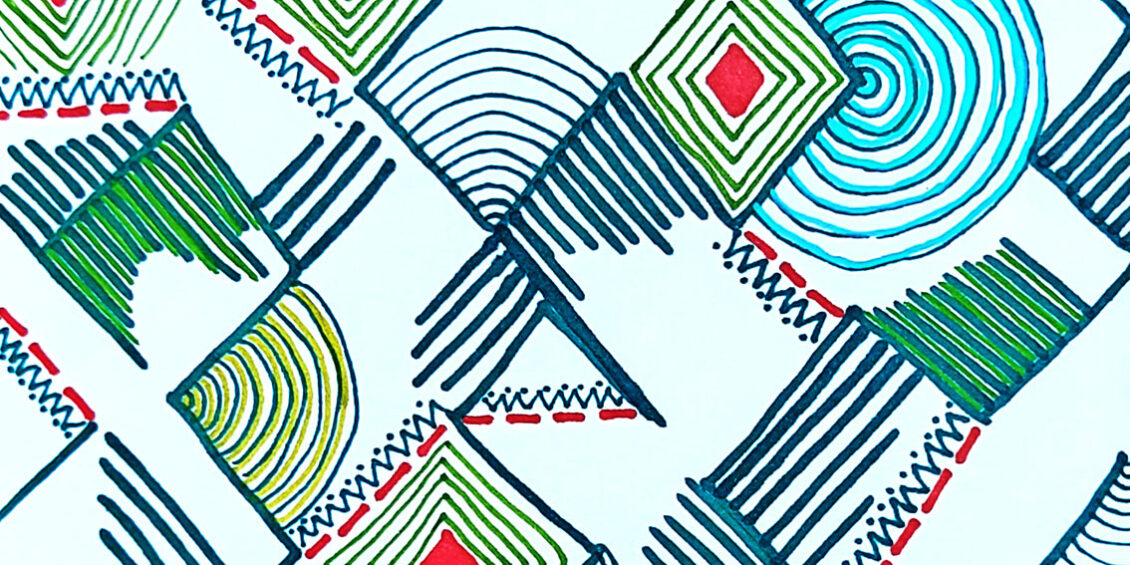
Featured image: Green Geometry (Sketchbook Art) by Leigh
22 Oct 2020
The name Carnival of Compassion came to me during my morning meditation on Thursday, October 1st, 2020. I can’t remember ever encountering the phrase before but I do remember opening my eyes from that meditation thinking this is the name of my exhibition! But I was in a serious energy slump. In fact, the day the name came to me was the same day I cried my eyes out on Chris’ shoulder when he came home for lunch. (More on that sob fest here.)
So it was some days later when I’d got my brain back on line and thought to find out if anyone else had had the same bright idea before. So I hit the internet – hard. Thus began my first Contextual Review for this project. I used these column headings: Name/Date/Location/Lead – Type – Purpose – Notes – URL Link/Date Accessed.
I found that many were based more on the fairground style Carnivals and consisted games, food, stalls and booths. They were often one off events that acted as fundraisers or promotional events run by churches, charities or some other social purpose group e.g. Compassion Church, Cru Club, Pallium India and the Lisa Fiedler Foundation for Families.
That said, I found three references that definitely needed further investigation into their potential relevance to my Carnival of Compassion exhibition. Read on for a summary or read the full review here.
1) Jamil Zaki
As Head of Stanford’s Social Neuroscience Laboratory, Zaki’s expertise really intrigues me. His book The War for Kindness seems like it might contain key advice about how social change happens at a community and individual level. I’m hoping there is also information on how to be more compassionate that I can pass on to visitors throughout the exhibition. If nothing else, his list of sources should be enlightening and give me more leads for key info on Compassion and its motivations. See the excerpt from my Contextual Review below for my notes on this. Click the image to enlarge.

2) Armand Gatti
His is the earliest use of the phrase that I can find and I am still unsure whether he actually coined the phrase or if Richard Coe was the first to use the phrase when analysing Gatti’s work. Gatti’s play La Deuxième Existence du camp de Tatenberg is a social commentary and deconstructed reimagining of people living through German/Nazi occupation in Vienna, Austria and the death camp Mauthausen. See the excerpt from my Contextual Review below for my notes on this. Click the image to enlarge.
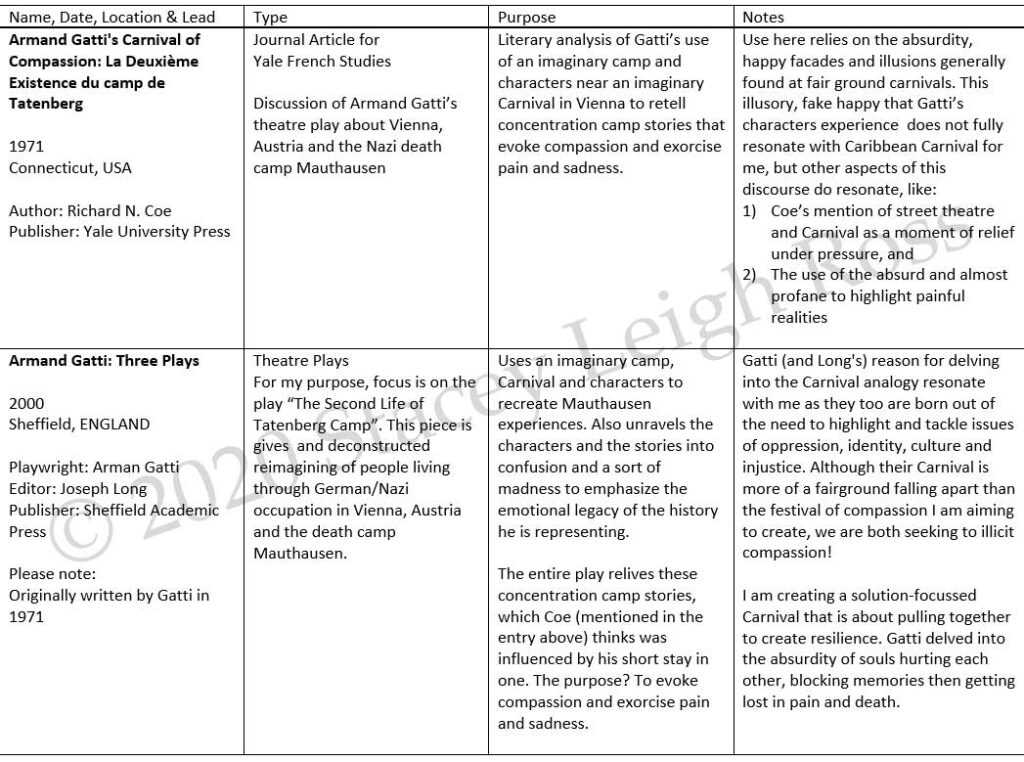
3) Rebecca Solnit
Several news articles and even Jamil Zaki’s Wall Street Journal article reference Solnit as their source of the phrase “Carnival of Compassion”. Solnit is an American author, historian, and activist whose book A Paradise Built in Hell studies community behaviour amid disaster and devotes several chapters to the concept “Carnival of Compassion”. From the little I’ve been able to see on Google Books so far, she analyses Carnival and what it represents before committing to this phrase so I’m super curious to see how a non-Trinbagonian, non-Caribbean person interprets Carnival and which type of Carnival influences her use of the phrase. The book is on order, so I shall await it with bated breath! Then update this post or devote a new post entirely to what I discover. See the excerpt from my Contextual Review below for my notes on this. Click the image to enlarge.
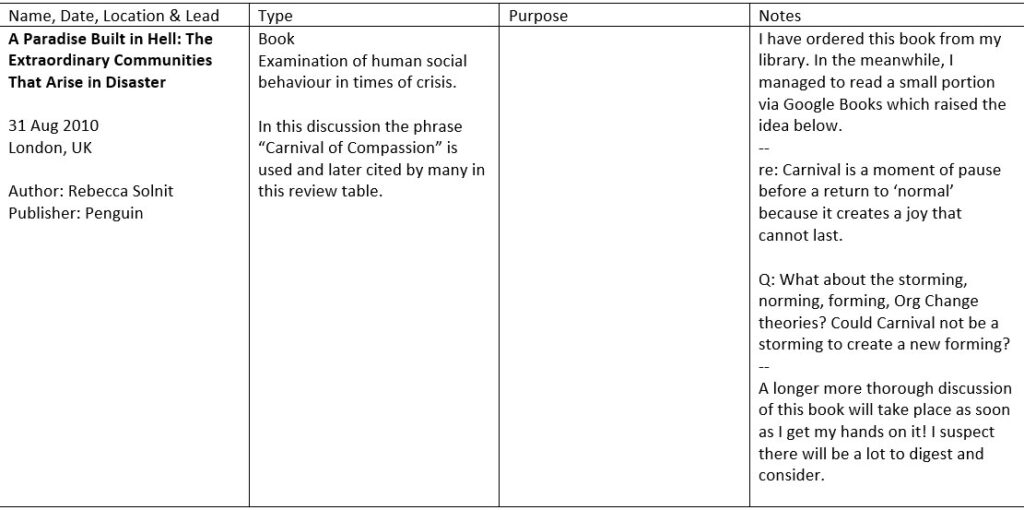
The really absolutely brilliant news from all this is that only 5 pages showed up on an internet search for “Carnival of Compassion” (with and without parentheses). I went through every page and not one search result was about, or directly related to, art or any Caribbean Carnival. Suh-weet!
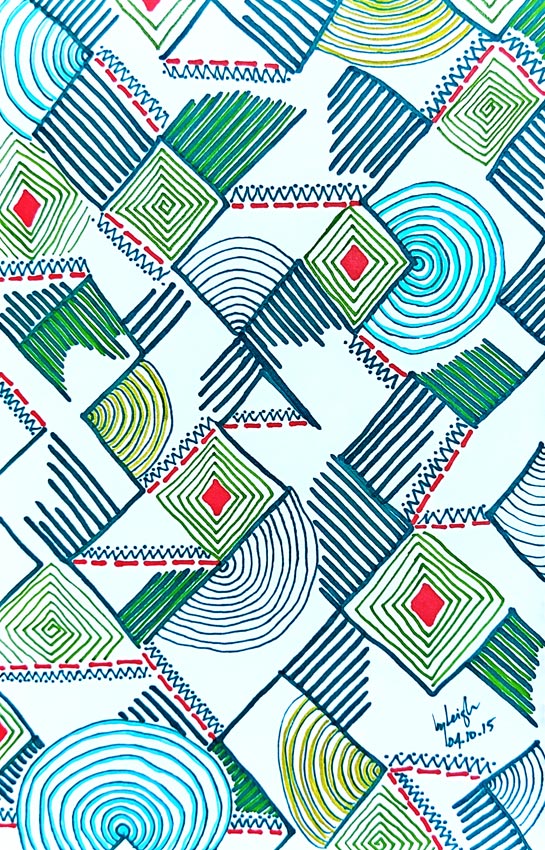


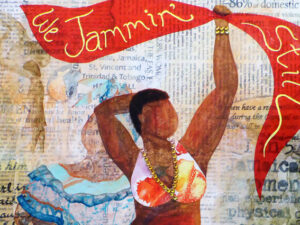
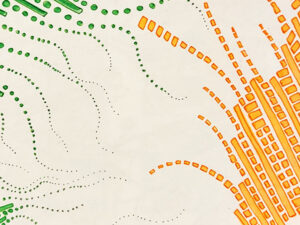
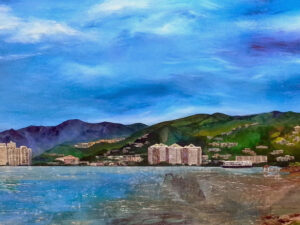
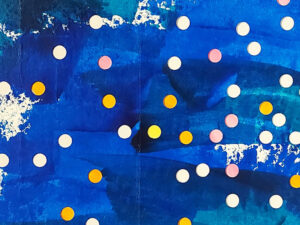

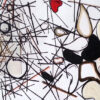
Exhibition Review – Blowtorching the Bitten Peach